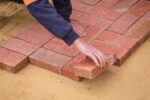How to renovate a home with foundation problems
Home renovation. A siren song for homeowners. The glimmering brochures, the television shows promising overnight makeovers… it’s captivating. Yet, beneath that glossy exterior often lurks an inconvenient truth: foundation problems. And renovating atop a cracked or sinking foundation is akin to building a magnificent sandcastle as the tide surges in. It looks glorious…until it doesn’t. We have to explore this difficult issue.
The Elephant in the Room: Recognizing Foundation Issues
The first hurdle is acknowledging that there is a problem. Many homeowners bury their heads in the sand, hoping against hope that the hairline crack in the basement wall is merely cosmetic. Don't do that. Look for the warning signs. They're often subtle, but cumulatively, they scream "foundation repair!"
-
Cracks: Obvious, yes, but pay attention to the type of crack. Horizontal cracks are often a bigger deal than vertical ones, potentially indicating hydrostatic pressure against the foundation walls. Stair-step cracks in brickwork are another red flag. Think of them as little directional arrows pointing to a big problem. Vertical cracks are normal…somewhat.
-
Uneven Floors: A slight slope might be charming in a centuries-old farmhouse. A pronounced dip suggesting soil settlement? Not so much. A spirit level becomes your best friend. And maybe get a very long level for greater accuracy across larger distances.
-
Sticking Doors and Windows: Doors and windows suddenly becoming difficult to open or close? It could be humidity, or it could be the house shifting, throwing everything out of square. Check to see if there are associated cracking around doors and windows too.
-
Water Intrusion: Water in the basement is never a good sign. It can be caused by poor drainage, but it can also be a symptom of foundation cracks allowing groundwater to seep in. Sump pumps can help.
-
Soil Movement: Look around the perimeter of your house. Is the soil pulling away from the foundation? Are there unusual bulges or dips? These could indicate soil erosion or compaction problems affecting the foundation's stability.
Ignoring these signs is like ignoring a persistent cough. It might go away on its own, but it could also be something far more serious. Engaging a structural engineer for a thorough foundation inspection is an essential first step. They will assess the extent of the damage, determine the cause, and recommend appropriate repair solutions.
The Ripple Effect: Why Foundation Repair Matters Before Renovation
Skipping foundation repair to get to the "fun" stuff—the new kitchen, the spa bathroom—is short-sighted. The foundation is, well, the foundation. It supports everything else. Imagine building a second story onto a house with a shaky foundation. The added weight will only exacerbate the problems, leading to more severe (and more expensive) damage down the road. Think of the entire structure like a pyramid. If the base is bad then the top is doomed too.
Renovating without addressing foundation issues can also invalidate warranties on new materials and workmanship. A contractor installing beautiful new tile won't guarantee their work if the underlying floor is prone to shifting due to a foundation problem. They're not miracle workers, you know!
Furthermore, failing to disclose known foundation problems to potential buyers can land you in legal hot water when you decide to sell. Transparency is key. Hiding a critical flaw doesn't make it go away; it just makes it someone else's problem…until they discover it.
Foundation Repair Methods: A Brief Overview (Without the “How-To”)
There's no one-size-fits-all solution to foundation repair. The best approach depends on the type and severity of the damage, the soil conditions, and the house's construction. Here are a few common methods, presented without specific instructions:
-
Slab Jacking: This involves pumping grout or foam beneath a concrete slab to lift and level it. Good for settled slabs, but not ideal for all situations.
-
Piering: Piers are driven deep into the ground to provide support for the foundation. There are various types of piers, including helical piers, push piers, and concrete piers. Each has its own advantages and disadvantages.
-
Wall Anchors: These are used to stabilize bowed or cracked foundation walls. They involve installing metal plates on the interior of the wall and anchoring them to the soil outside the foundation.
-
Carbon Fiber Reinforcement: Carbon fiber straps can be applied to the interior of foundation walls to add strength and prevent further cracking. A less invasive option for relatively minor damage.
-
Underpinning: This involves extending the existing foundation deeper into the ground to provide additional support. A more involved and costly solution.
The specific method employed should be determined by a qualified structural engineer, not a random contractor. Getting multiple bids and comparing the proposed solutions is always a good idea.
Budgeting for the Unexpected: Foundation Repair Costs
Foundation repair is rarely cheap. The cost can range from a few thousand dollars for minor crack repair to tens of thousands of dollars for more extensive work. It's essential to factor this into your renovation budget from the outset. Consider these factors to know what to expect:
-
Severity of the Damage: More extensive damage requires more extensive repairs, which means higher costs.
-
Type of Repair Method: Some repair methods, like underpinning, are inherently more expensive than others.
-
Accessibility: If the foundation is difficult to access, the cost of labor will likely increase.
-
Geographic Location: Labor and material costs can vary depending on your location.
-
Permits: Many foundation repair projects require permits, which add to the overall cost.
It's better to overestimate the cost of foundation repair than to underestimate it. Having a contingency fund in place can help cover unexpected expenses. It is always a good idea to get a firm grasp on the price.
Renovation After Foundation Repair: Proceeding with Caution
Once the foundation is stabilized, you can proceed with the renovation. However, it's crucial to take a few precautions:
-
Monitor the Foundation: Keep an eye out for any signs of further movement or cracking. Document any changes and consult with your structural engineer if necessary.
-
Address Drainage Issues: Poor drainage can contribute to foundation problems. Make sure your gutters and downspouts are functioning properly and that the ground slopes away from the house.
-
Consider the Weight of Renovations: Adding heavy materials, such as stone countertops or tile flooring, can put additional stress on the foundation. Consult with your structural engineer to ensure that the foundation can support the added weight.
-
Be Mindful of Landscaping: Planting trees or shrubs too close to the foundation can cause problems. Roots can damage the foundation, and excessive moisture can lead to soil expansion and contraction.
The goal is to prevent future foundation problems and protect your investment. This involves taking precautions, not just the aesthetic things.
The Long-Term Perspective: Protecting Your Investment
Renovating a home with foundation problems is a complex undertaking, but it can be done successfully. The key is to address the foundation issues first, work with qualified professionals, and be prepared for the unexpected. Yes, it can be difficult for some who are not knowledgable. Remember, investing in foundation repair is not just about fixing a problem; it's about protecting your investment and ensuring the long-term stability of your home. It's about creating a solid base upon which to build your dreams, both literally and figuratively.
Renovating a property with known structural issues can offer opportunities for investors and homeowners alike to enhance the value and appeal of a home, but awareness of potential pitfalls is a must. The risks are real, but careful project management and selection can mitigate them.
The housing market has seen fluctuations which impact construction costs, so staying informed on these cycles is important for accurate budgeting and timing of renovation projects. By doing it with care and skill, you might see the value rise like crazy.








